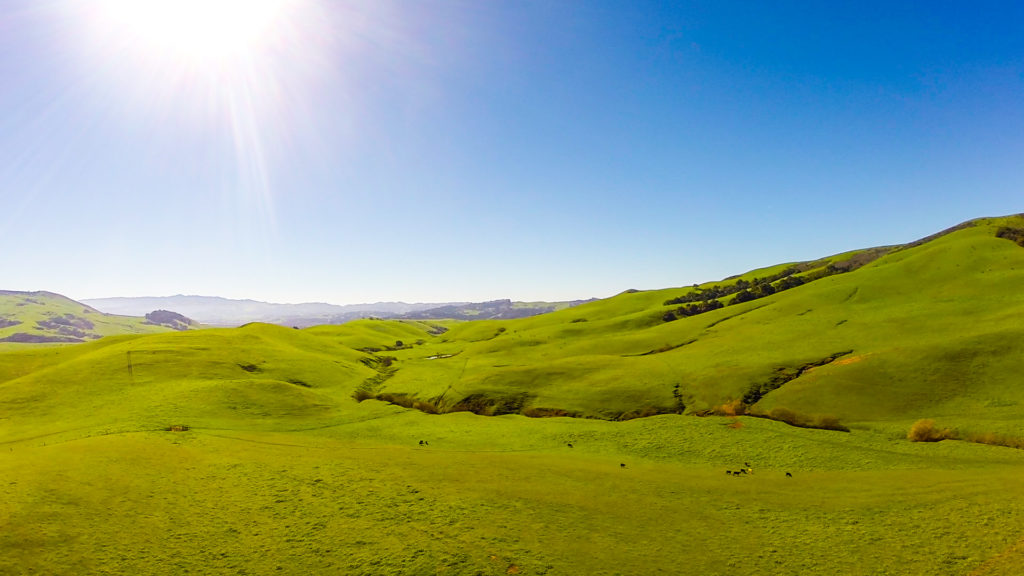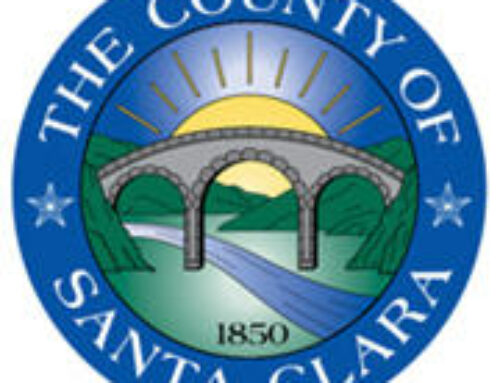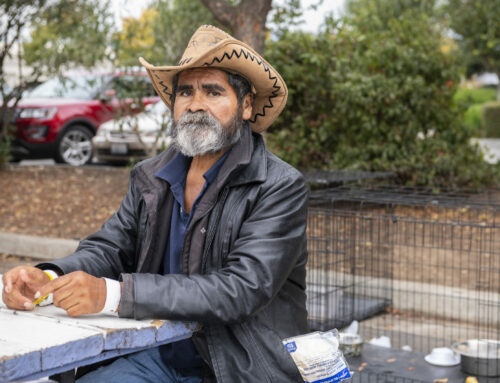Published in the June 20 – July 3, 2018 issue of Morgan Hill Life

Verne Freeman

Sargent Ranch * Photo courtesy Sargent Ranch
For the past five years, I have had the great opportunity of managing the unique and beautiful property known as the Sargent Ranch. This 6,400-acre property in southern Santa Clara and Santa Cruz counties is a hidden gem. And it is almost unknown to the South Valley community.
The ranch contains an amazing array of geologic wonders and biological diversity, and it provides wildlife connectivity for the coast to the Gavilan Range and beyond. The Sargent Ranch has the only tar pit north of La Brea in Los Angeles. It has the pristine Tar Creek drainage that remains just as it has been for millennia, an untouched landscape of water and monumental trees. The ranch also has beautiful, unmatched views of south Santa Clara Valley, the San Juan Valley and lands beyond. It is the home of many animals, including the endangered red-legged frog, burrowing owl, tiger salamander and many other species such as deer, hawks and eagles.
The unique geology of Sargent Ranch has also created an inland sand deposit that originated in ancient rivers but now has been lifted up more than 400 feet in the hills, transported by the action of the Sargent fault. This deposit, a rare gift of geology, allows us to provide sand to the local construction market without having to dig and disturb a river, creek or beach. Our Sargent Quarry project will provide Santa Clara County with a local source of sand without any impacts to rivers, streams or fish habitats.
Many people are unaware that sand is a diminishing resource worldwide. Sand is chiefly used in the manufacturing of concrete, making up roughly 45 percent by volume. If you look around at all the construction activity in the valley, you can imagine how much sand is being consumed every day. Most of the sand currently being used is being imported from Canada.
Sand delivered from our Sargent Quarry would create local jobs, provide sales tax revenue to Santa Clara County and also cut greenhouse gas emissions from the transportation of that sand by two-thirds. It is estimated that Sargent Quarry will create 25 direct-paying jobs and more than $3 million in annual sales taxes for Santa Clara County residents.
In my time working with the ownership of the ranch, we have developed a comprehensive land use plan that includes more than 4,000 acres of public acquisition for conservation and public access. The key to this strategy is the approval of our 320-acre sand quarry project.
The only opposition we have encountered to date to our project is from the Amah Mutsun and their leader Val Lopez. Mr. Lopez has claimed that any mining of sand on the Sargent Ranch would be a violation of their sacred ground, the land that they called home in the days before the Spanish missions. In an effort to understand our own history, we have engaged historians and ethnographers and this is what we have learned regarding Mr. Lopez’s claims.
Prior to the arrival of the Spanish explorers, Sargent Ranch was inhabited by the Unijaima people whose territory extended from what is currently downtown Gilroy to the convergence of the Pajaro River and San Benito River. The Unijaima were hunter/gathers who moved from season to season throughout the region following the food supply. From time to time they inhabited a village they called Juristac that had four known locations. None of these locations was in or near the sand quarry project area.
Under the previous leadership of Irenne Zweirlein, a faction of the Amah Mutsun tribal band worked closely with the former owners of Sargent Ranch to develop the ranch into an Indian casino, two golf courses, 2,000 homes and a Native American historical center. We understand that Val Lopez did not support that proposal and the current owners of Sargent Ranch have no interest in developing an Indian casino on the ranch.
It is also clear that the native peoples embraced mining. The Unijaima themselves mined the tar at Sargent Ranch for use as sealant for baskets and other vessels. Mining for the Unijaima was not desecration of sacred land but a wise use of the gifts of the land. As we move forward with our vision for the ranch, we hope the Amah Mutsun will have a seat at the table and an interest that connects them to the land that their ancestors once may have inhabited. We have made offers to them in the past and are ready to meet and discuss solutions with them at the appropriate time.
And we hope we can have the public’s support for our project and for our overall vision for this unique and important property known as the Sargent Ranch.
Verne Freeman is the manager of Sargent Ranch. He wrote this in response to Val Lopez’s guest column in the June 13, 2018 issue of Gilroy Life.






